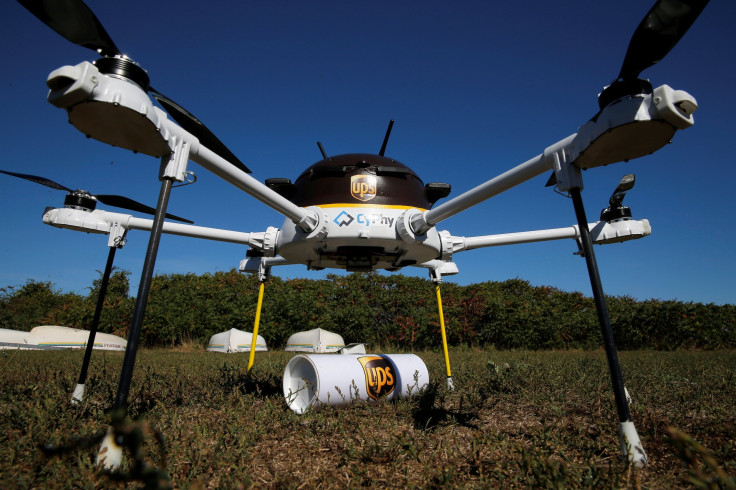Amazon Prime Air: 5 Facts About The Company's Drone Delivery System

Amazon announced Wednesday that it had made its first commercial drone delivery. CEO Jeff Bezos revealed in a Tweet that it took 13 minutes from “click to delivery” and that the delivery made to a customer in England is on Amazon’s books.
First-ever #AmazonPrimeAir customer delivery is in the books. 13 min—click to delivery. Check out the video: https://t.co/Xl8HiQMA1S pic.twitter.com/5HGsmHvPlE
— Jeff Bezos (@JeffBezos) December 14, 2016
Drone deliveries might be in a nascent stage right now, but companies such as Amazon and Domino’s have proved with their test deliveries that commercial drone deliveries are a not-so-distant possibility. Drone deliveries take less time than traditional mode of deliveries and seem to be a more convenient way for retailers to make deliveries.
Amazon is currently using two of its customers as test subjects, but the company believes that its “Prime Air” service has great potential.
“Prime Air has great potential to enhance the services we already provide to millions of customers by providing rapid parcel delivery that will also increase the overall safety and efficiency of the transportation system,” the company says on its website.
Here are 5 facts about Amazon Prime Air delivery that you might find interesting.
- Fast Delivery: Amazon claims that customers could get their packages within 30 minutes of ordering. This would be a big improvement from the standard 24-48 hour Amazon Prime delivery time and would give Amazon an advantage over its e-commerce rivals in terms of customer service.
- Flight range: According to the company, its drone can reach a height of 400 feet and fly for 15 miles at a stretch.
- Sense and avoid technology: A pertinent question is — how would delivery drones avoid obstacles in their path? Amazon has taken care of this by using a sensors-based “sense and avoid” technology, which lets the drone veer away from obstacles and avoid accidents. The company’s patent for the technology explains that its drones would use laser, sonar and other technologies to avoid obstacles.
- Environmental impact: Amazon’s drone delivery would reduce its dependence on polluting vehicles. Drones do not burn fuel, which makes them more environment friendly than the traditional ways of delivery.
- Efficiency and impact: Amazon’s drones navigate solely by GPS without any need for human interference. This reduces the chances of human errors in delivery such as loss of packages. Delivering packages through drones might also help retailers such as Amazon reach areas which haven’t been covered yet due to logistical issues.
© Copyright IBTimes 2024. All rights reserved.











